An Azure Function is an “event driven, compute-on-demand experience…with capabilities to implement code triggered by events occurring in Azure or third party service as well as on-premises systems.” A nice feature is you can create these functions in a serverless environment.
To create an Azure function, go to portal.azure.com and search for Function. You will see Function App. This is a logical grouping of functions:

Click Create:
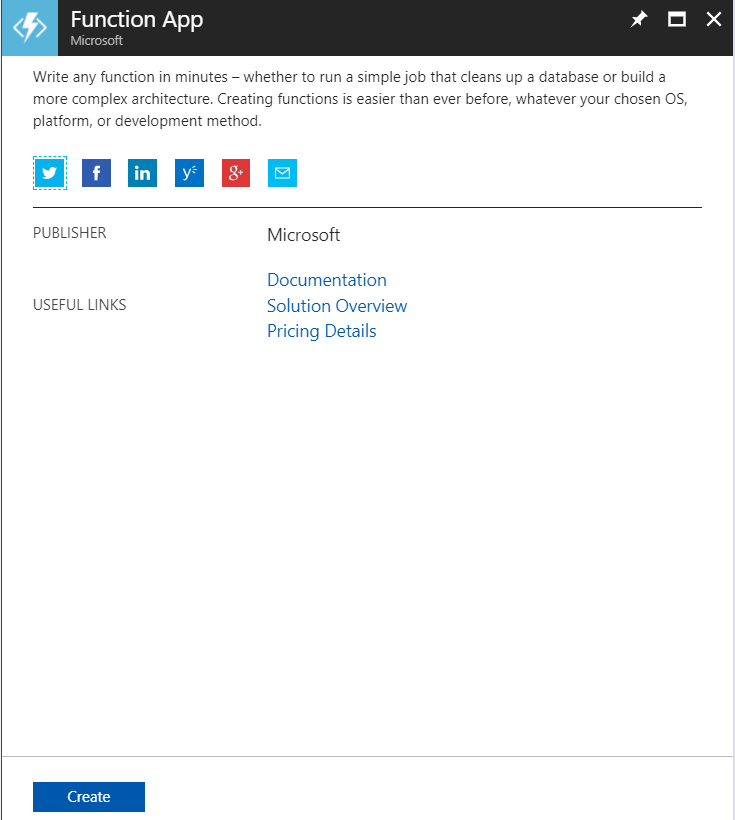
Provide a name and click Create:
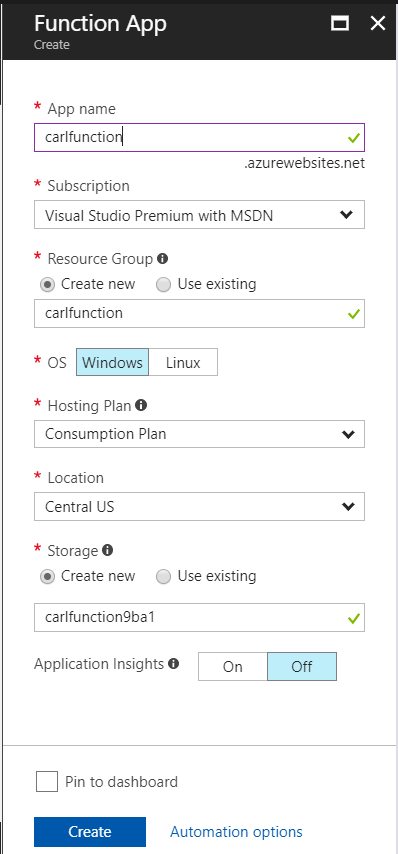
Now, we will add a shortcut to Azure Functions:
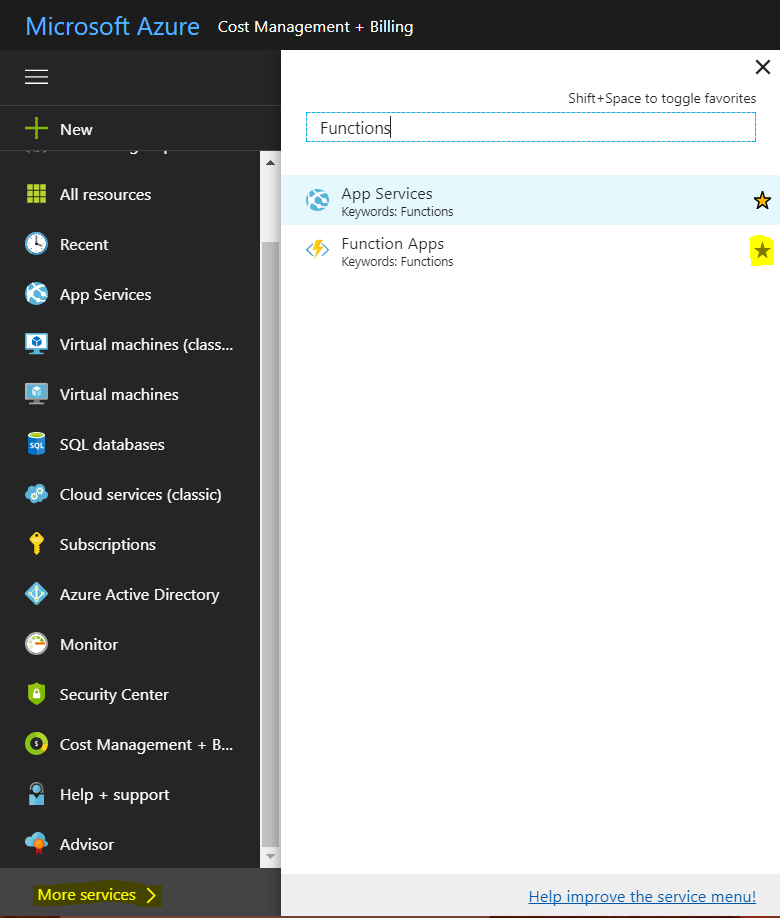
You will now see Function Apps in the bottom left:
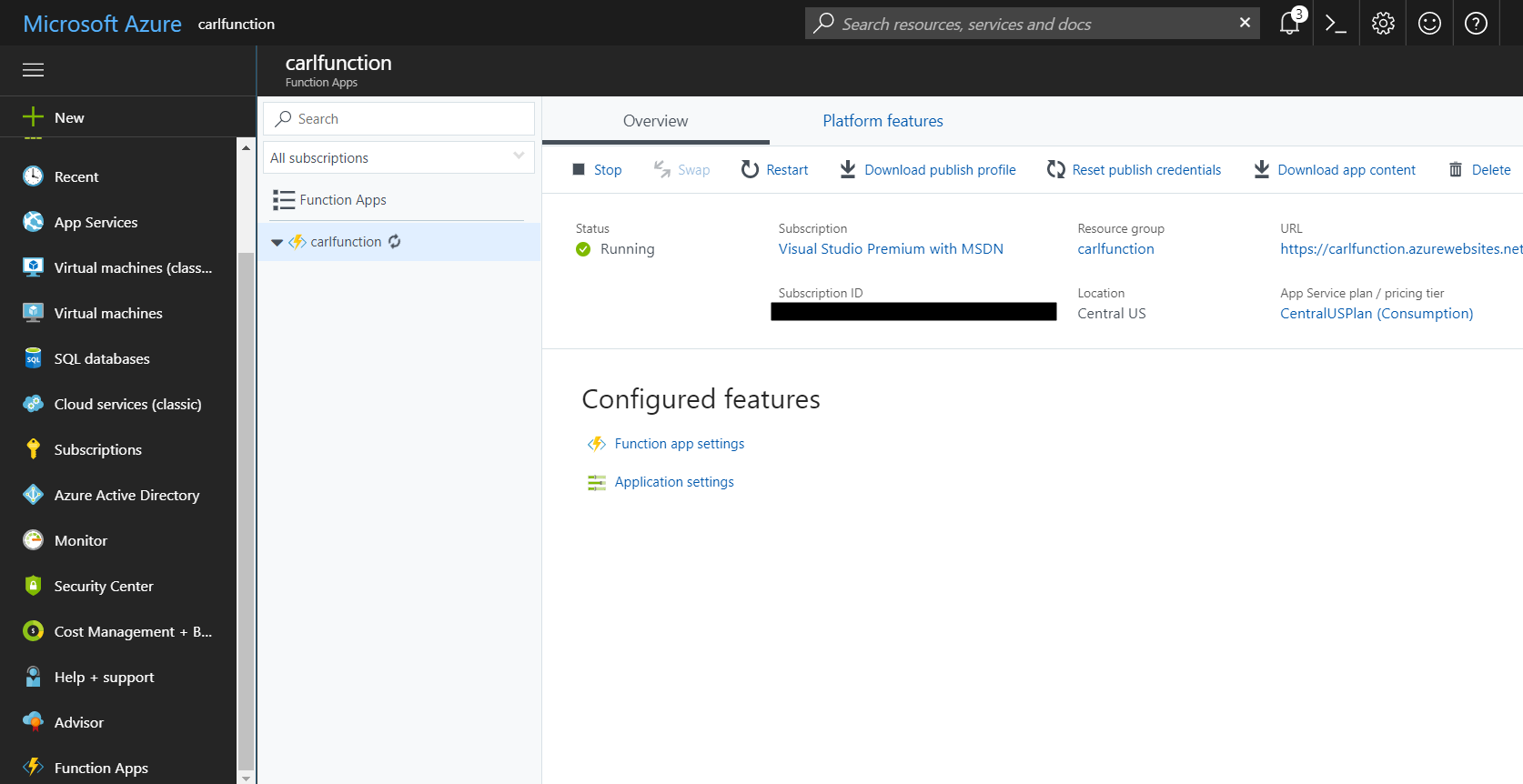
Now, we will create an http triggered function. From our new function app, select + to create new:
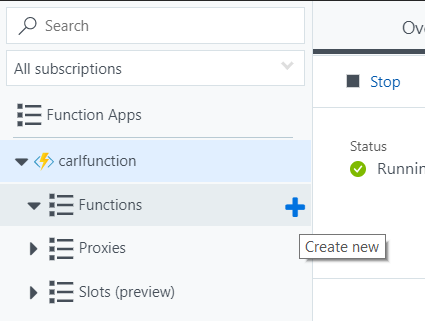
This will open the window below. Note the language options:
- C#
- JavaScript
- FSharp
- Java
Click Create:
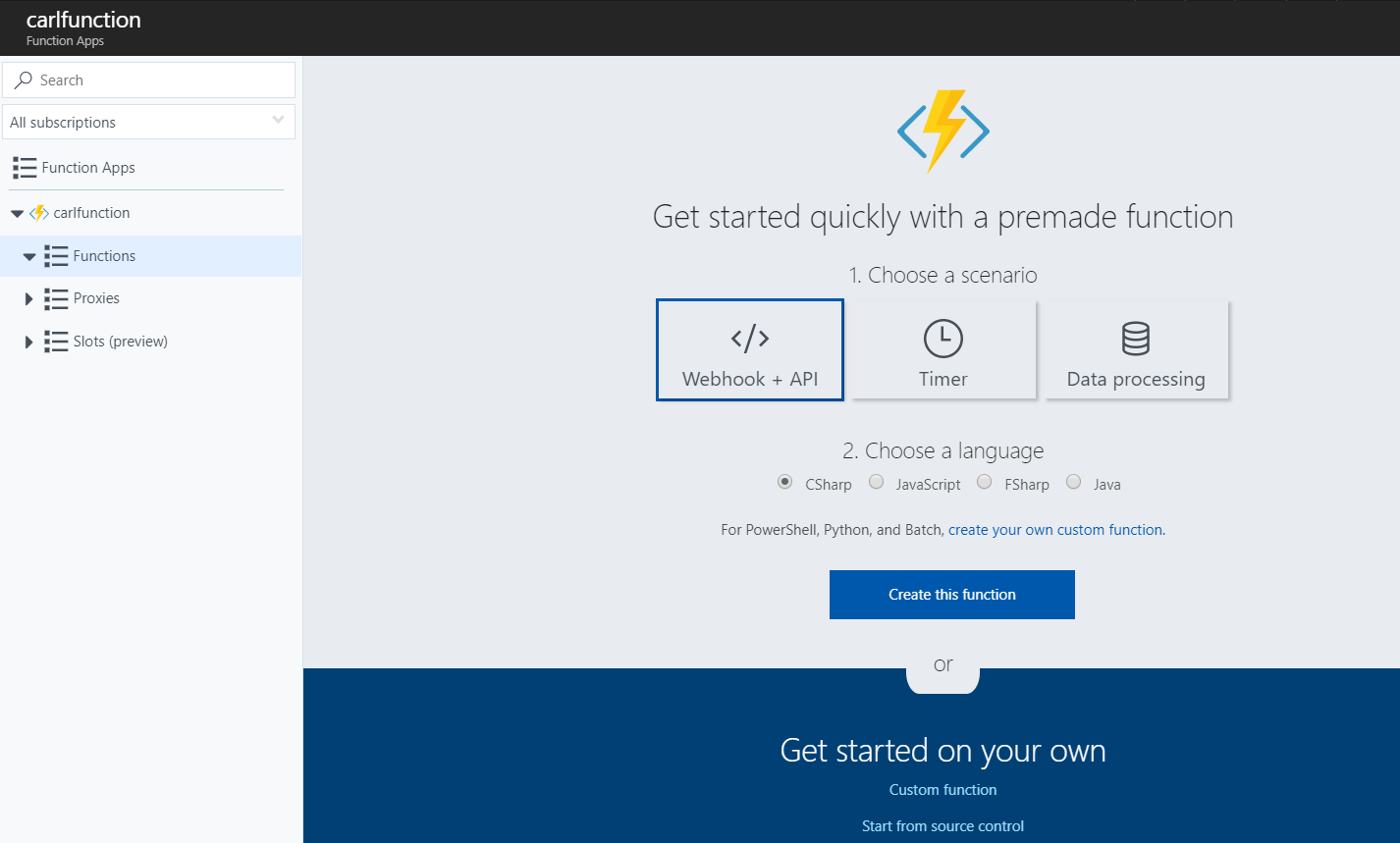
A function is now created in C#:
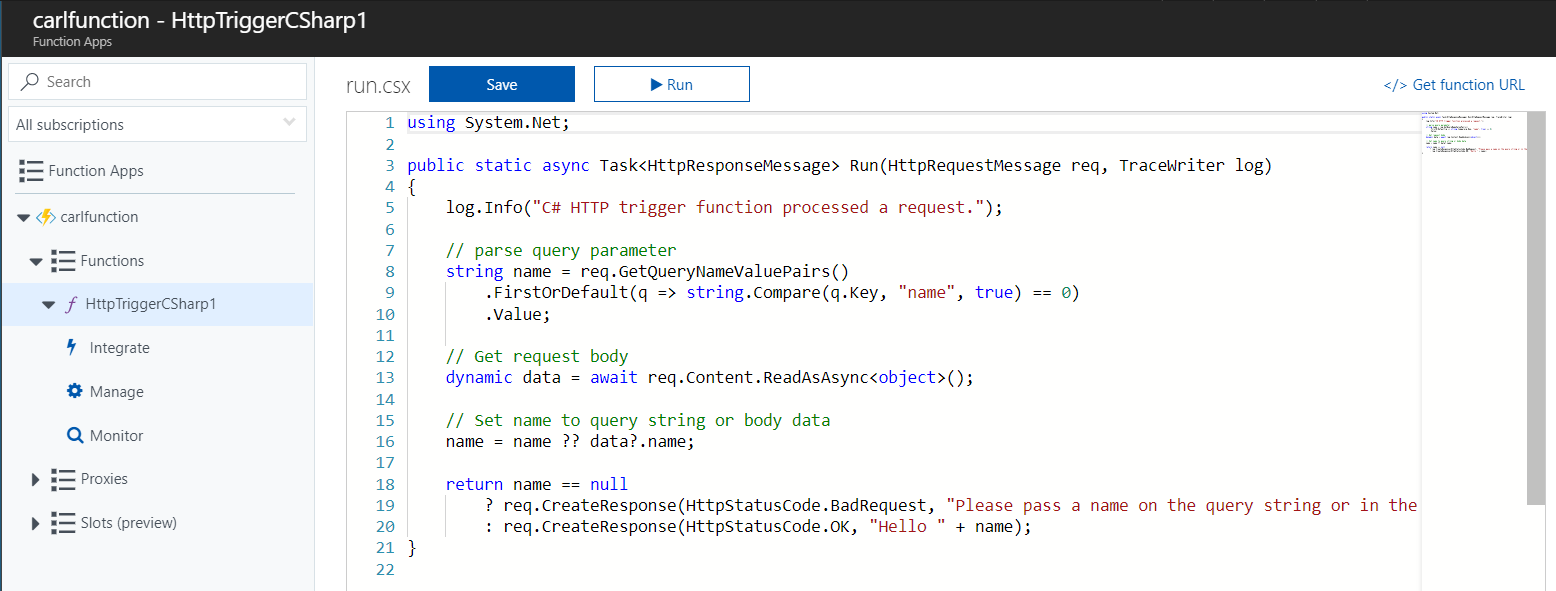
To run the function, click on Get Function URL in the top right. Copy the URL:

Paste the URL into a web browser, and append to the URL &name=Carl. The function will return:

Expand logs at the bottom of the function. You will see details on the requests:

Click Run to see a test call:
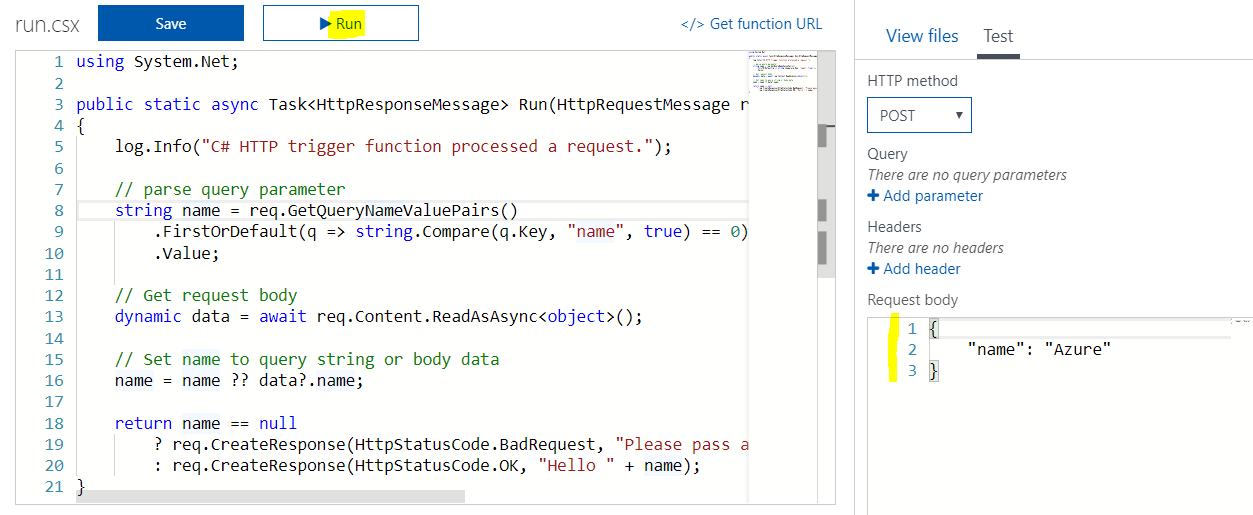
Click on Integrate to add inputs to your function such as looking up data, or outputs to your function such as sending to a queue:
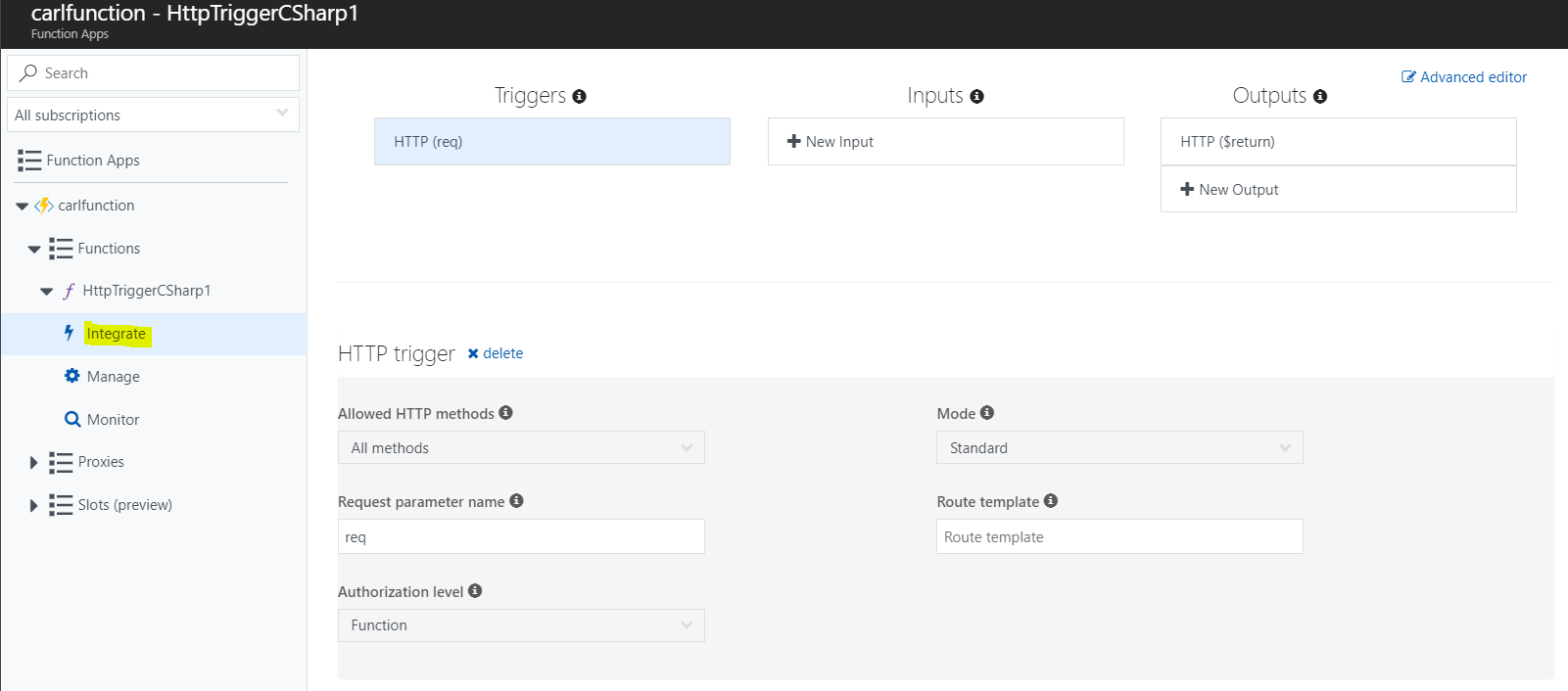
And view documentation including code samples:
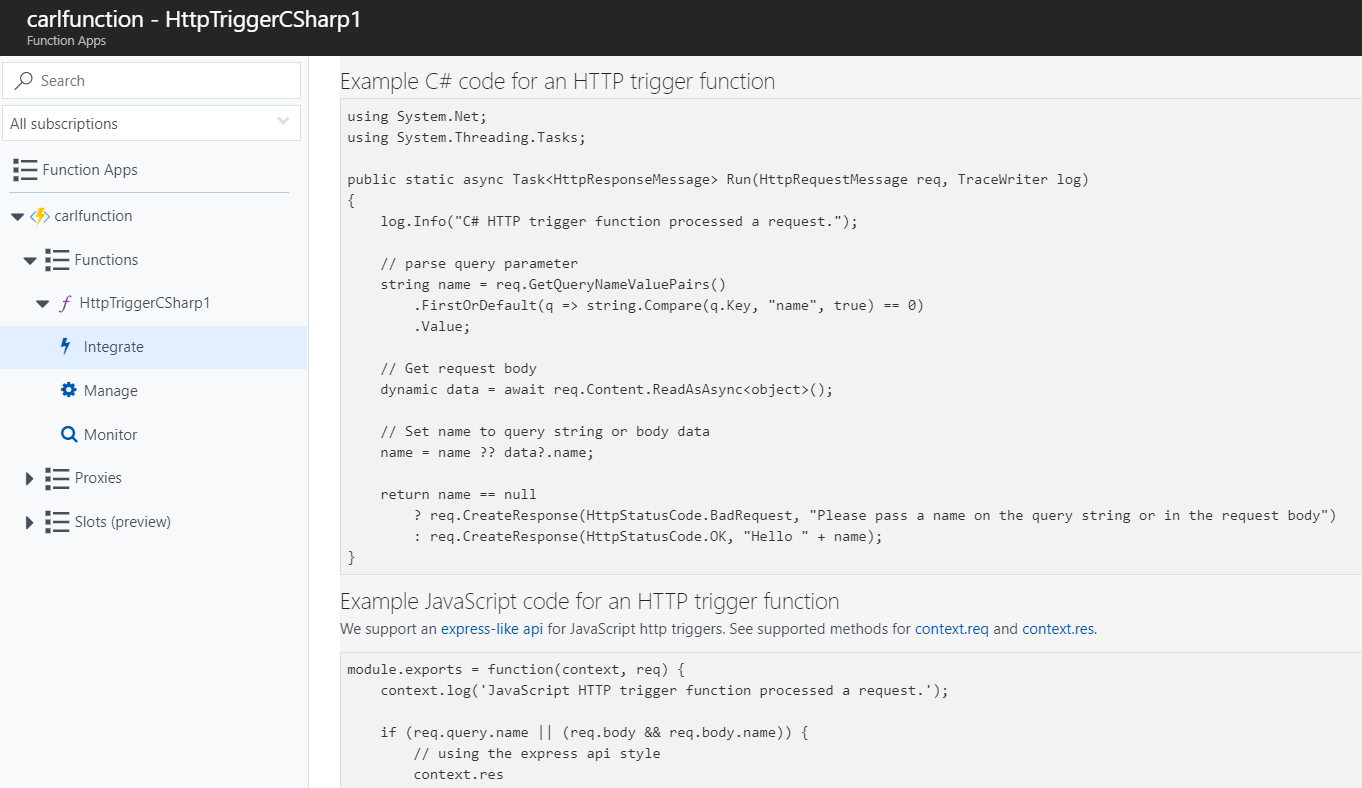
Click Manage to view and manage the app keys:
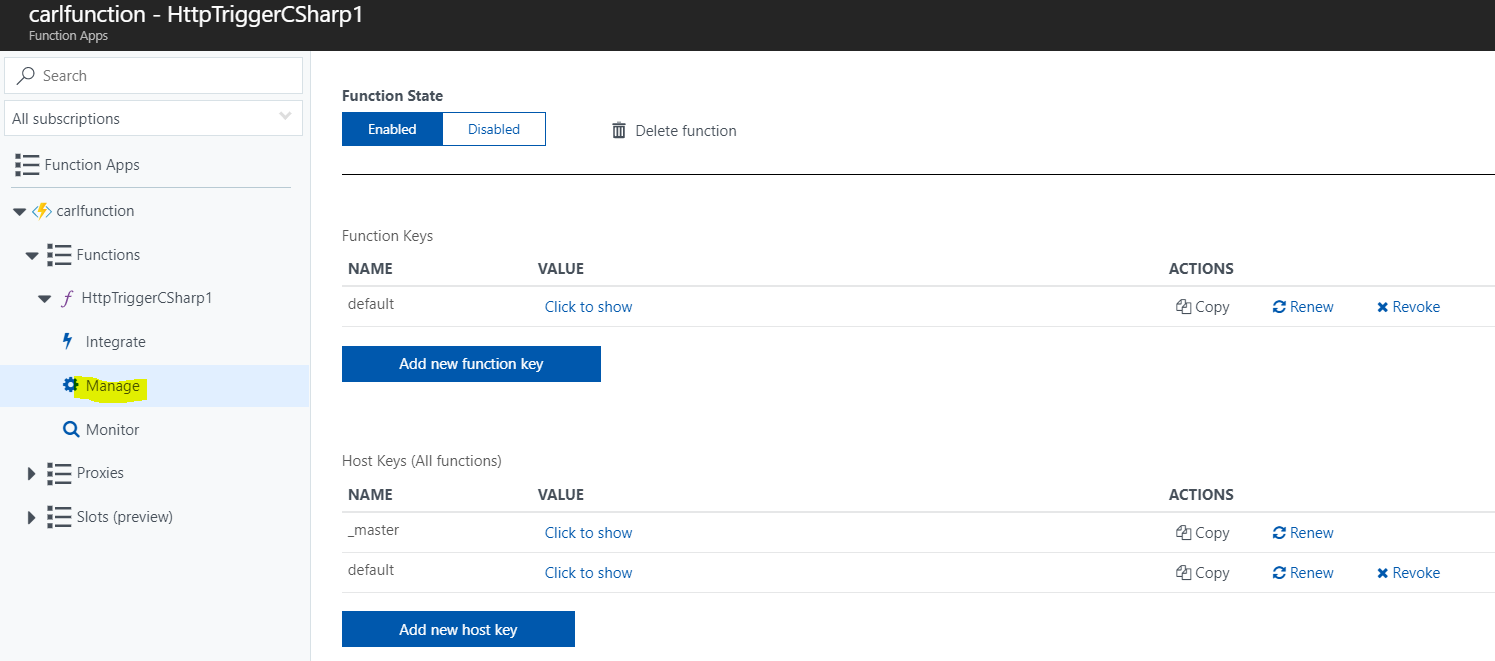
Click on Monitor to get invocation details about the function:
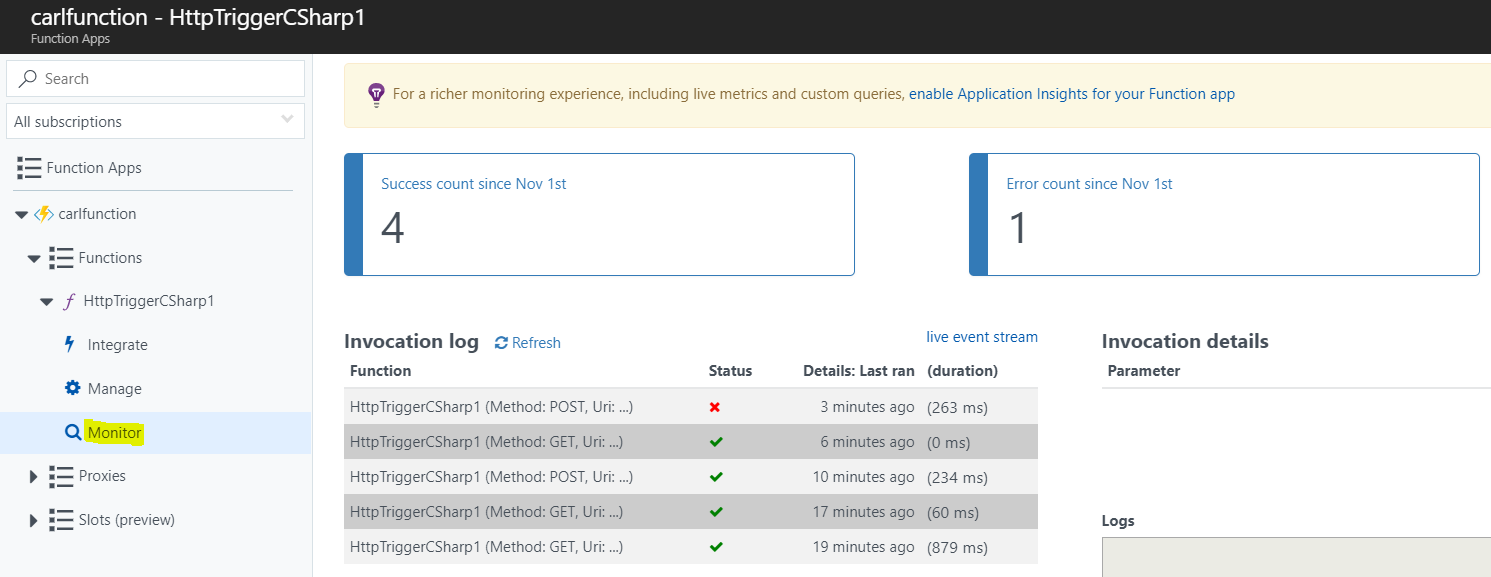
I AM SPENDING MORE TIME THESE DAYS CREATING YOUTUBE VIDEOS TO HELP PEOPLE LEARN THE MICROSOFT POWER PLATFORM.
IF YOU WOULD LIKE TO SEE HOW I BUILD APPS, OR FIND SOMETHING USEFUL READING MY BLOG, I WOULD REALLY APPRECIATE YOU SUBSCRIBING TO MY YOUTUBE CHANNEL.
THANK YOU, AND LET'S KEEP LEARNING TOGETHER.
CARL



